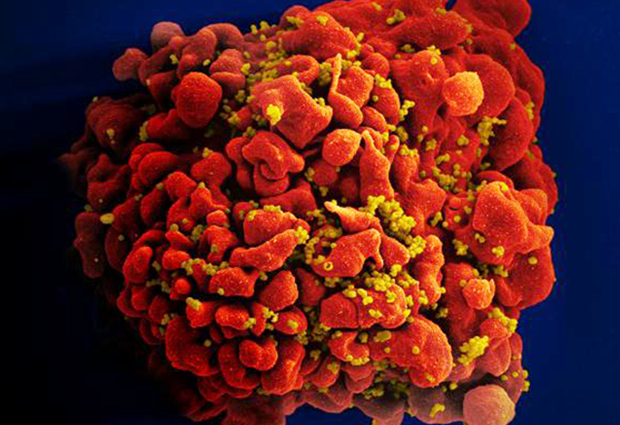
Read the latest Issue

If a group of clever computer hackers managed to take control over the assembly line of a major car company, they might be able to start churning out their own Hacker Brand cars. Such an audacious plan might not be a serious threat for today’s car manufacturers, but in essence it’s a trick that many viruses pull off: after infecting a cell, they hijack the cell’s protein-making machinery to make copies of themselves, which then spew out of the cell and infect new targets. HIV is a case in point. Yet unlike a newly minted car, the HIV virus does not come off the production line fully functional. Each HIV virion has to mature before it can become infective in its own right. This process involves cutting a long protein called Gag into smaller domains, some of which end up forming the capsid proteins comprising the inner shell of HIV that houses its tiny genome. This viral maturation is a developmental step that can be targeted and halted by anti-HIV drugs.
These in vitro assembled structures look similar to the immature virus at low resolution.
In order to understand how HIV matures, and how this process might be halted, it is crucial to have a detailed picture of the immature HIV virion. Rather than studying the virus as it is naturally produced by infected cells, Structural and Computational Biology Unit Group Leader John Briggs and colleagues at EMBL Heidelberg have looked at viruses assembled in test tubes from some of the component parts. “These are in vitro assembled structures, and we assume that they mimic the immature virus because we know what the immature virus looks like at low resolution, and these structures look similar.” Previously, Briggs and colleagues used this approach to report a high-resolution structure of Gag from Mason-Pfizer monkey virus (MPMV), a retrovirus similar to HIV that is sometimes used as a substitute for studying HIV directly, and which has been used as a model for understanding HIV assembly. Now, Briggs and his team have applied the same trick to HIV itself, and their results are reported in a recent paper published in PNAS. To get a high-resolution structure, the team used a combination of cryo-electron microscopy and tomography analysis, which revealed protein interactions in parts of Gag that are crucial for immature HIV assembly, and subsequent viral maturation. They also showed that in HIV the key parts of Gag are put together in the same was as in MPMV, while other parts are different. This will help them understand which parts play the essential roles in building a virus, and which parts are fine-tuned by the different viruses for the different cells they infect.
Looking for past print editions of EMBLetc.? Browse our archive, going back 20 years.
EMBLetc. archive